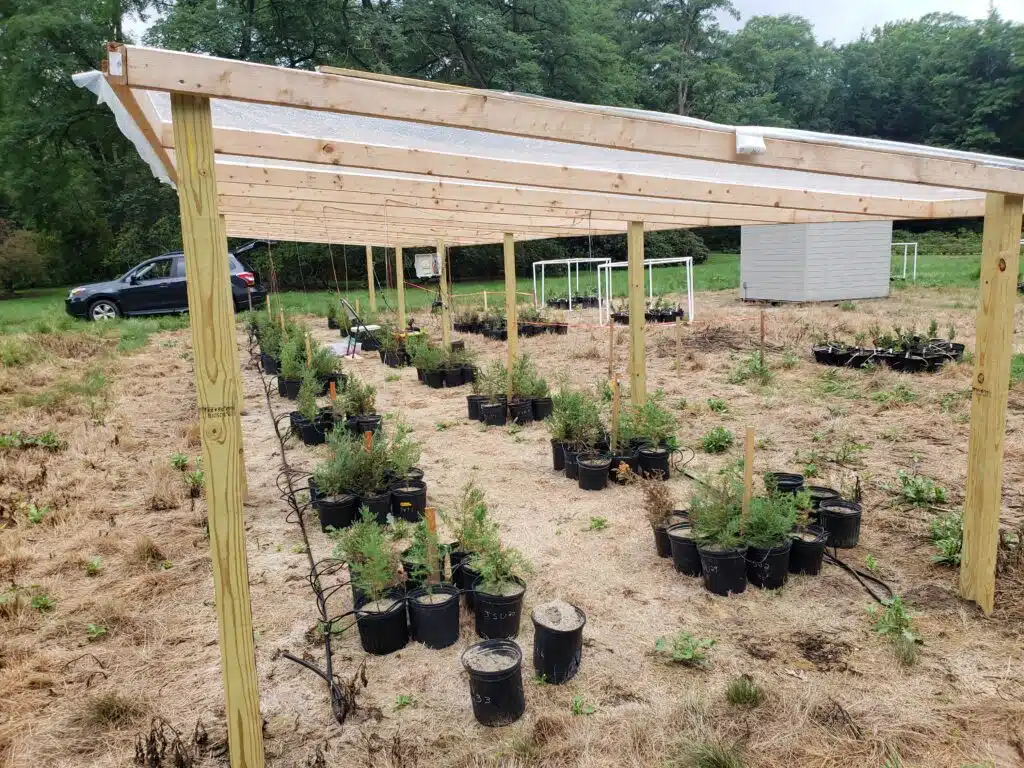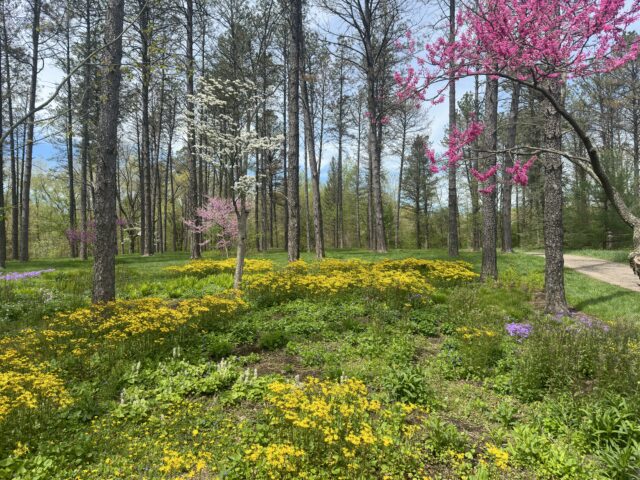Holden Researchers Uncover How a Resilient Tree Acclimates to Stressful Environments
November 8, 2023

The eastern red cedar, Juniperus virginiana, is known for its ability to thrive across a wide range of habitats. These large evergreens can be found all over the eastern half of the United States, surviving both brutal northern winters and steamy southern summers. The trees are currently expanding their range westward, now also cropping up in semi-arid regions where droughts are common.
Eastern red cedar is a popular ornamental, being prized for its beautiful shape, evergreen foliage, and ease of care. But out in the western grasslands of the U.S., where it’s not native, the species is considered a problem because it replaces native grassland species and degrades grazing lands that are critical resources for ranchers.
The tree’s ability to thrive in a range of climates has led researchers to look into the chemical mechanisms of how these trees survive in such different environments. In an era where climate change threatens countless species in unpredictable ways, uncovering the secrets of biological resilience can offer both timely and important insights.
“Plants which are able to rapidly adjust their cellular physiology to fit any kind of growing conditions may be more resilient to changes in climate,” says Juliana Medeiros, plant biologist at the Holden Arboretum. “This might be a factor that allows species to expand into new habitats.”
In a study published in the journal Tree Physiology, Medeiros and colleagues investigated the role that a type of molecule called nonstructural carbohydrates (NSCs) play in protecting the eastern red cedar from both cold weather and droughts. Randall Long, now at Lewis and Clark College in Portland, Oregon, began the work while he was a postdoctoral researcher at the Holden Arboretum, and Sam Harbol, Norweb Fellow in the Medeiros lab, continued the research.
NSCs include sugars and starches. The sugars are osmotically active, which means that they act like antifreeze in the plant cell — sugar water doesn’t freeze as quickly as plain water. These sugary NSCs are known to be an important actor in the cold acclimation process that evergreen plants undergo as they harden their tissues in preparation for winter. But until now, it wasn’t clear whether the changes in NSCs during cold acclimation of the eastern red cedar might explain patterns of recent range expansion of the species.
For the new study, researchers explored how eastern red cedars grown from seeds collected from different climates fared when exposed to the seasonal progression of temperatures from summer to winter. Seeds were collected from three states across the species’ range – New Jersey, Florida, and South Dakota — and grown at the Holden Arboretum. When the days shortened and grew colder toward the end of the year, some plants from each group were allowed to experience the cold conditions outside, while others were protected from the cold inside a greenhouse. By comparing the physiological response of the different plants, the researchers were able to understand how the plants acclimate to the cold.

Throughout the course of the study, the team analyzed samples of each tree’s foliage to determine how their NSC concentrations changed. They discovered that when the trees went through their seasonal cold acclimation process, the foliage contained more sugars and fewer starches, as expected. This suggests the trees were indeed altering their NSC ratios in order to bolster their tolerance for chilly weather.
The trees grown from seeds that came from colder climates acclimated to the changing seasons more quickly, unlike their peers who came from warmer climates. The eastern red cedars from Florida took the longest to produce more of their sugary antifreeze, but in the end were still able to increase their sugar-to-starch ratios and develop resilience to the cold.
“The main takeaway from the study is that plants can change their cellular chemistry to make themselves more stress resistant,” says Medeiros. “But even within a single species, plants from warm and cold locations can have very different responses to stress, and these differences will translate directly into where you can find these plants growing in nature, both now and into the future.”
The researchers also tested the eastern red cedars’ NSC responses to drought conditions, but found no measurable effect. This suggests NSC responses don’t explain the advancement of eastern red cedars into more drought-prone regions. While that mystery remains, the discovery of the relationship between NSCs and cold tolerance helps pull back the curtain on a process that boosts climate resilience in the species.
“This study helps us understand how flexible eastern red cedar can be in the face of change,” says Medeiros. “New work in our lab is using modeling approaches to determine what locations have the most suitable climate conditions for this species now, how that suitability has changed over the last 100 years, and how it is expected to change going forward.”
“This work will provide much-needed data for rangeland managers working to control the further spread of the species, and will inform assessments of climate change impacts broadly,” she says.
Citation: Harbol, Samuel C.; Long, Randall W.; Medeiros, Juliana S. 2023. Juniperus virginiana sourced from colder climates maintain higher ratios of soluble sugars to starch during cold acclimation. Tree Physiology. https://doi.org/10.1093/treephys/tpad115
About Holden Forests & Gardens: Holden Forests & Gardens is made up of two of Northeast Ohio’s most important environmental and cultural institutions — the Holden Arboretum and Cleveland Botanical Garden — whose mission is to connect people with the wonder, beauty, and value of trees and plants, to inspire action for healthy communities. One of the largest public gardens in the country, Holden Forests & Gardens has 18,000 member households and an annual attendance of nearly 350,000 for whom we strive to provide inspirational and educational visitor experiences. For more information, visit holdenfg.org.
Media Contact:
Anna Funk
Science Communications Specialist
Holden Forests & Gardens
afunk@holdenfg.org
Corresponding Author:
Juliana Medeiros
Scientist
Holden Forests & Gardens
jmedeiros@holdenfg.org

Anna Funk, PhD
Science Communications Specialist
Anna Funk is the Science Communication Specialist for Holden Forests & Gardens. She earned her Ph.D. studying prairie restoration before leaving the research world to help tell scientists’ stories. Today, she wears many hats, working as a writer, editor, journalist and more — anything that lets her share her appreciation of science and its impact with others.











